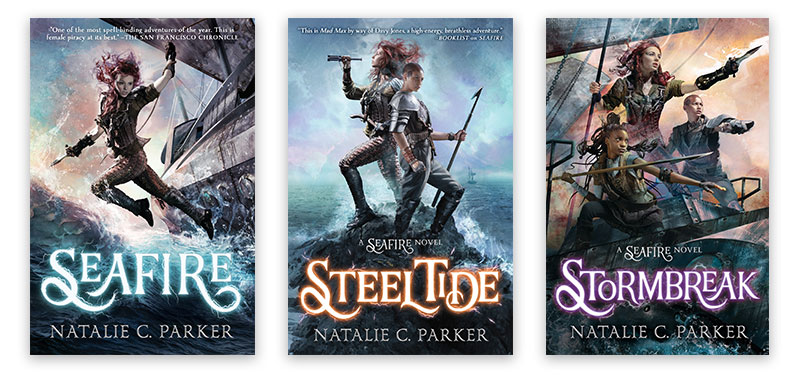Natalie C. Parker is an author and editor of books for young adults. Stormbreak, the thrilling conclusion to her Seafire trilogy, is scheduled to come out in February 2021. In this guest post for the Mackin Community blog, she explores how to spark creativity in the midst of the COVID-19 pandemic, and why it is so crucial to continue telling stories for young adults.
Over the course of the pandemic, I’ve done more and more author events online. In nearly all of them, the same question arises: How do you find creative energy right now?
To be very honest, this question usually hits me like a brick wall. I’m used to answering questions about inspiration and routine, about where my ideas come from and how I know when a specific idea is meaty enough for a story. But for most of 2020, I was more concerned with adapting to the shifts in my routine and the world than I was in analyzing them. My answers to this question have ranged from the very micro— “I focus on keeping a schedule and making checklists to stay on track”—to the frustratingly macro— “I find ways to refill my creative well!”

Neither is exactly wrong, but the truth is more complicated.
I am always writing during times of stress; everything I write is in some way a response to points of conflict in my life. Conflict is, after all, the spark of any story. But 2020 has been different. The points of conflict are immense, spidering out from disparate centers, creating cracks in every facet of life from the social to the personal to the political. Being a storyteller in 2020 has been intensely different and I have struggled to maintain my creative energy.
It feels a little like sitting down at my desk and looking out the window to see that my neighborhood is on fire and choosing to write anyway. And I think this feeling is where the question comes from. How do we continue to create when the world is burning around us?
When I started writing for teens, I was eager to dive into the vivid kinds of stories that were flourishing with young adult audiences. I wanted to dig into the messy gendered stereotypes that I’ve struggled to unpack as an adult and create stories that didn’t assume those stereotypes were true.
I still want to do those things, but one of the big questions 2020 made me ask myself was tremendously simple and terrifyingly complex all at once. It made me ask why.
Why do my stories matter right now?
Why should I spend energy telling them?
Why are they needed?
For a long stretch of 2020, I wasn’t sure I had good answers. I’ve always believed that fantasy and science fiction offer unparalleled opportunities for asking big questions about our own world. As an author of SFF and speculative fiction, my work as a creator is tied to that belief, and I struggled to see how my stories in particular were relevant to our current situation.
But just as 2020 has sharpened the edges of my skepticism and sorrow against this unrelenting blade of indifference, it has reminded me that imagination and empathy are crucial to our ability to problem-solve and create a better world. And it was in this that I found my truest answer to the question: How do you find creative energy right now?
 I tell stories about young people who wind up in seemingly impossible situations facing down larger-than-life obstacles. In Seafire, a young captain and her crew come to the realization that they are the only people capable of standing against a tyrant who takes every opportunity to shape the world with cruelty. In spite of being young and relatively inexperienced, the crew decides to fight for something better. Perhaps it’s no coincidence that these young characters end up with the task of fixing problems they didn’t create. This is a theme across young adult fiction, and I think it’s because it mirrors our own world.
I tell stories about young people who wind up in seemingly impossible situations facing down larger-than-life obstacles. In Seafire, a young captain and her crew come to the realization that they are the only people capable of standing against a tyrant who takes every opportunity to shape the world with cruelty. In spite of being young and relatively inexperienced, the crew decides to fight for something better. Perhaps it’s no coincidence that these young characters end up with the task of fixing problems they didn’t create. This is a theme across young adult fiction, and I think it’s because it mirrors our own world.
Right now, writing for young audiences is a call to action and to imagination. Because part of changing the world we live in is not only being able to imagine something better, but to imagine being a part of the solution.






